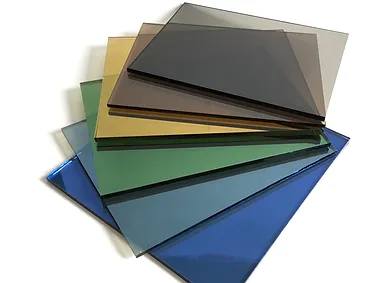
When it comes to designing windows and doors for a new home or replacing existing ones, the variety of glass types available is extensive. Homeowners seeking to create double glazed units, also known as insulated glass units (IGUs), are presented with an array of choices for their preferred glass types. These options encompass factors such as thickness, size, tint color, and film, allowing for tailored customization to meet individual preferences.
Perth Double Glazing offers the following extensive range of combinations:
1. Float Glass:
Clear float glass serves as the fundamental choice for windows and doors. Renowned for its light transmission, it is a commonly utilized basic glass variant. Available in clear or colored forms, float glass is manufactured in large sheets and can be enhanced through modifications as detailed below.
2. Toughened Safety Glass:
Boasting up to five times the strength of clear float glass, toughened safety glass excels in impact resistance. It finds frequent application in glass doors due to its heightened durability. Through the toughening process, the risk of thermal breakage is notably reduced.
3. Laminated Safety Glass:
Laminated glass emerges as a favored option for both residential and commercial windows and doors. It comprises multiple layers of glass bonded together by heat and pressure, featuring a polyvinyl butyral (PVB
) interlayer. This interlayer ensures the glass remains intact even upon breakage. Moreover, it can block a substantial amount of UV rays. Laminated glass delivers enhanced sound insulation and thermal properties, available in clear, tinted, reflective, and low-e glass variants.
Exploring Glass Varieties:
1. Tinted Glass:
Tinted glass, mainly employed for solar control purposes, diminishes direct solar heat energy entering through windows. This variant also minimizes glare, making it a common choice for car windows. Tinted glass is available in prevalent shades such as grey, bronze, green, and blue.
2. Reflective Glass:
Adorned with a specialized metallic coating, reflective glass restricts outsiders from peering into homes or offices, while maintaining outward visibility. This glass option permits natural light while mitigating glare. Combining reflective glass with low-e glass in IGUs heightens thermal and energy efficiency. A diverse color spectrum including grey, bronze, green, and blue characterizes reflective glass.
3. Low-e Glass:
The ‘e’ in low-e glass denotes emissivity, which signifies a material’s capability to emit heat or energy. Low-e glass refers to a surface that minimizes solar heat gain. Achieved through a microscopic, transparent metal or metal oxide coating on one glass side, this innovation curtails UV light and heat penetration while upholding visible light transmission. Low-e glass enhances thermal insulation, contributing to reduced heating and energy expenses. Its application extends to all double glazed units.